static const uint8_t lifepo4[NUM_BATT_READINGS][2] = {
{144, 100}, {136, 100}, {134, 99}, {133, 90},
{132, 70}, {131, 40}, {130, 30}, {129, 20},
{128, 17}, {125, 14}, {120, 9}, {100, 0}
};
int16_t measurements_get_batt_perc(int16_t mv)
{
int16_t pct = 0;
int32_t x1, x2, vD, pD;
int32_t theta;
if (mv >= lifepo4[0][0]*100)
pct = lifepo4[0][1]; // cap value at 100%
else
{
for (int i=0; i<NUM_BATT_READINGS-1; i++)
{
// put voltages into mV instead of 100s of mV
x1 = (int32_t)(lifepo4[i][0])*100L; // Higher value
x2 = (int32_t)(lifepo4[i+1][0])*100L; // Lower value
if (mv <= x1 && mv > x2)
{
vD = x1-x2;
pD = (int32_t)(lifepo4[i][1] - lifepo4[i+1][1]);
if (pD != 0)
theta = pD*10000/vD;
else
theta = 0;
pct = lifepo4[i][1] - (x1-mv)*theta/10000;
break;
}
}
}
return pct;
}
The code is calculating battery percentage based in a LUT from this table:
 https://www.mobile-solarpower.com/diy-lifepo4-solar-battery1.html
https://www.mobile-solarpower.com/diy-lifepo4-solar-battery1.html
Does anyone have an idea or a better approach to help calculate battery percentage? The voltage is changing with respect to load. Is there a known formula for calculating battery percentage with a varying load etc? Or what is the best way to fuse the integral of current with voltage?
The battery percentage follows the chart provided however it does not take into account the current load and therefore is not displaying an accurate estimate.